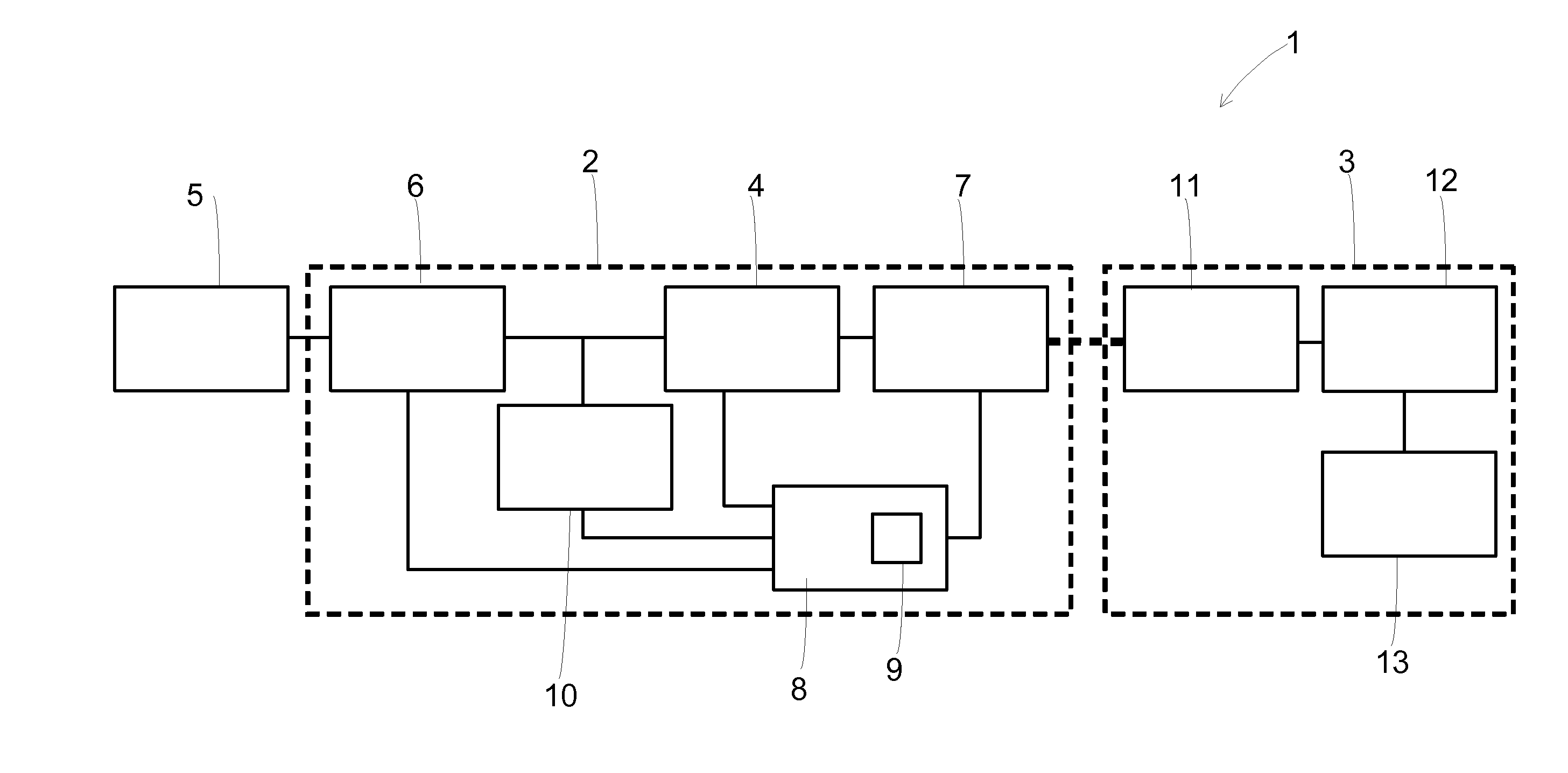Method for detecting and identifying a receiver in an inductive power transfer system
a technology of inductive power transfer and receiver, applied in the direction of instruments, inductances, current/voltage indication, etc., can solve the problems of undesired energy loss, inefficient power transfer, and inducible current (and therefore heat)
- Summary
- Abstract
- Description
- Claims
- Application Information
AI Technical Summary
Benefits of technology
Problems solved by technology
Method used
Image
Examples
Embodiment Construction
[0023]Embodiments of the present invention relate to methods for detecting or identifying a receiver in an inductive power transfer (IPT) system. FIG. 1 is a block diagram showing a general representation of an IPT system 1. The IPT system includes a transmitter 2 and a receiver 3. The transmitter includes a converter 4 that is connected to an appropriate power supply 5. In FIG. 1 this is shown as a converter that is connected to a DC-DC converter 6 that is in turn connected to the mains power supply. The converter may be a non-resonant half bridge converter or any other converter adapted for the particular IPT system, such as a push-pull converter. The converter is configured to output an alternating current of desired frequency and amplitude. The voltage of the output of the converter may also be regulated by the converter, the DC-DC converter or combination of both.
[0024]The converter 4 is connected to transmitting inductor(s) 7. The converter supplies the transmitting inductor(s...
PUM
 Login to View More
Login to View More Abstract
Description
Claims
Application Information
 Login to View More
Login to View More - R&D
- Intellectual Property
- Life Sciences
- Materials
- Tech Scout
- Unparalleled Data Quality
- Higher Quality Content
- 60% Fewer Hallucinations
Browse by: Latest US Patents, China's latest patents, Technical Efficacy Thesaurus, Application Domain, Technology Topic, Popular Technical Reports.
© 2025 PatSnap. All rights reserved.Legal|Privacy policy|Modern Slavery Act Transparency Statement|Sitemap|About US| Contact US: help@patsnap.com



